Category: Accountability

06.10.2025
Reforming the System to End the Cycle of Unsustainable Federal Student Loan Debt
The federal government lends over $80 billion in student loans every year, yet the system too often fails those it was designed to help and continues to allow far too many students and families to overborrow to pay for higher education. Some federal student loans, which includes Graduate and Parent loans, are made in virtually unlimited amounts and without meaningful underwriting, often to students and parents who are not able to pay them back. This has contributed to overborrowing and the rising cost of higher education.
In addition, the system notoriously lacks transparency, ranging from admissions and selection criteria to the real cost of attendance, making it very difficult for families to comparison shop and make informed decisions.
Addressing these issues would bring long-lasting solutions that are good for students, parents, and the federal higher education system as a whole.
Three Recommendations for Reform
1. Address college costs and limit overborrowing
Americans hold roughly $1.74 trillion in student loan debt as of the second quarter of 2024. Of that total, roughly 93% are made by the government. The remaining 7% are private student loans, which are credit based and underwritten by private lenders, who assess ability to repay before making a loan.
One of the biggest drivers of unsustainable debt is the federal program’s allowance for near-unlimited borrowing—including loans to parents that largely do not assess their ability to repay. These loans now total more than $100 billion for more than 3 million families. Federal graduate lending has also exploded, adding another $100 billion more to the federal balance sheet, accounting for nearly half of all newly issued federal student loans.
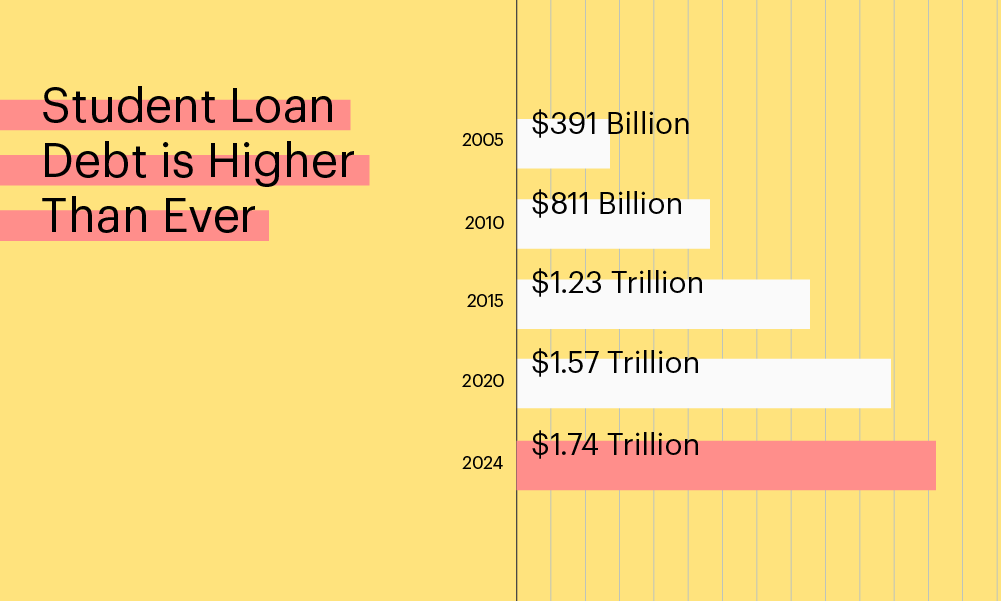
These programs have been labeled ‘predatory’ from experts on both sides of the aisle, and polling confirms most Americans believe addressing the unlimitednature of federal loan programs will protect students, and make college more affordable.
By allowing virtually unlimited borrowing without considering the ability to repay, the federal program continues to create unsustainable debt levels and limits incentives to explore affordable education options. Putting reasonable limits on these federal loan programs would protect families from taking on more than they can afford to repay and encourage students to consider all educational options, bending the curve of rising college costs.
2. Focus resources on those who need the most support
Access to higher education remains uneven. The federal student loan program continues to do too much for too many and not enough for those who need the most support. Too often, students from underserved communities – many of whom are first-generation college students — lack the tools and resources needed to make well-informed, confident decisions about paying for their higher education.
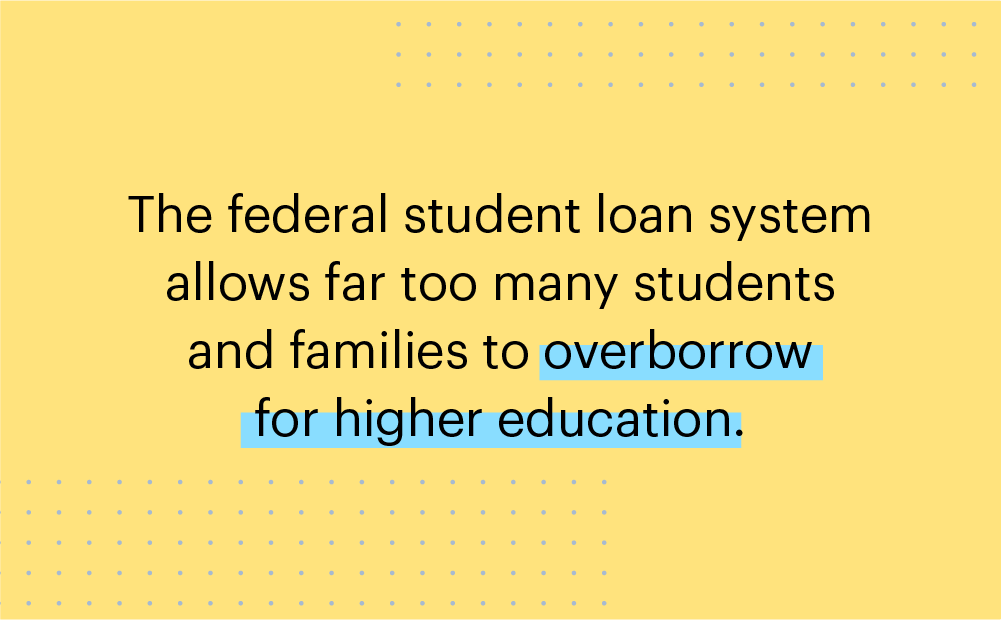
Borrowing should never be the first option for paying for college, but the current federal financial aid system is poorly designed to avoid it. Pell Grants, once a cornerstone of college affordability for those who truly needed assistance, haven’t kept pace with rising tuition. They now cover less than 30 percent of the average cost at a four-year public university, down from nearly 80 percent in 1980. Redirecting resources to expand Pell Grants could boost enrollment and retention for students who show financial need. Increasing Pell Grants for those who need the most support is one of the most effective ways to reduce their reliance on borrowing and keep access to college within reach for more students.
We also need to make it easier for them to apply. In 2024, more than $4 billion in Pell Grants went unclaimed, money that could have put higher education within reach of students who need it most. Reforms to graduate lending could generate more than $40 billion in federal savings over the next decade[RC1] [TC2] . That’s funding that could be redirected to expand need-based aid and support for non-traditional and workforce-aligned programs—creating more pathways to success without unsustainable debt.
In addition, the issues that have plagued the Free Application for Federal Student Aid (FAFSA®) need to be fully addressed, so the already complex process of applying for federal financial aid is less confusing for students and families. Likewise, financial aid offers from schools should also be clearer and more transparent so that families understand the true cost of college and how much they will ultimately need to pay.
We offer all students and families access to free college planning tools including a free scholarship search tool, and step-by-step FAFSA guide.
3. Empower degree completion
Access to college on its own is not enough – higher education stakeholders need to focus attention and resources on prioritizing college completion just as much as college access.
Far too many students take on debt without earning a degree. In fact, more than 40 million Americans have some college education but no degree.
In addition, roughly six in 10 students who start college graduate in six years. Research consistently shows financial issues, life changes, and mental health concerns are some of the barriers that keep students from graduating
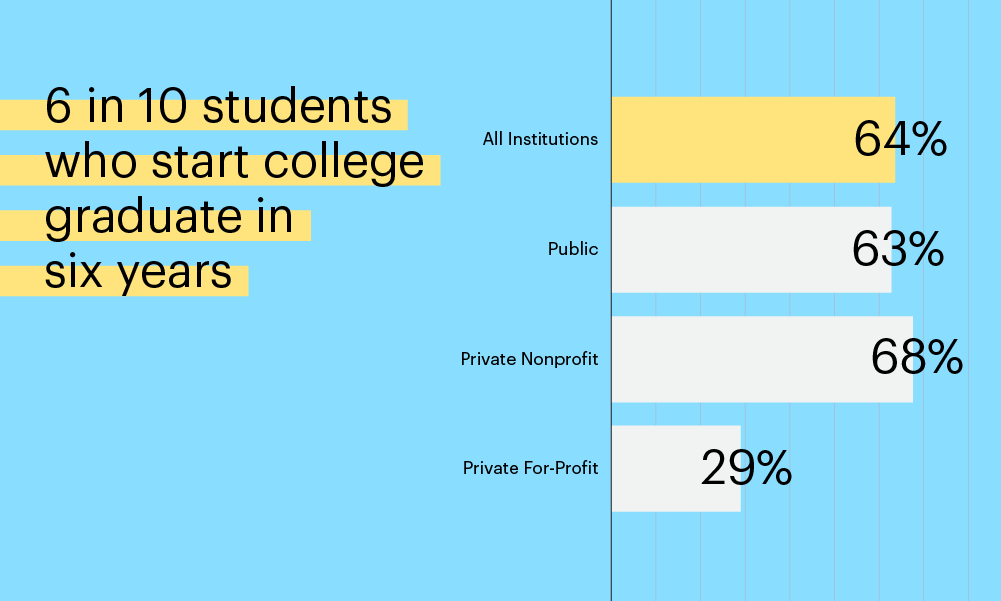
Often small debts, overlooked bills, or expenses get in the way of completion. To address that issue, we created our Completing the Dream Scholarship in partnership with Thurgood Marshall College Fund.
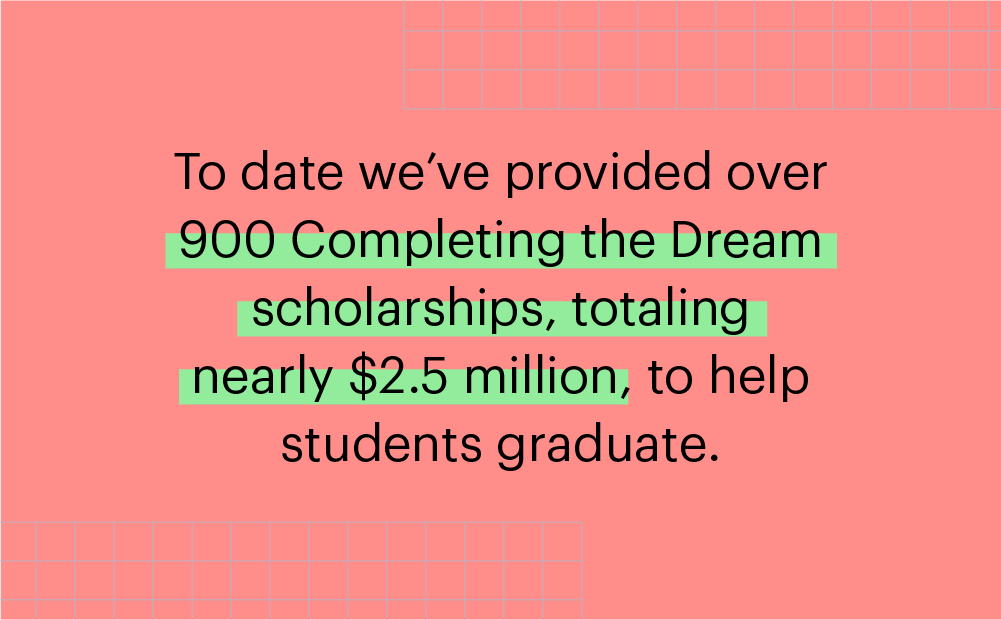
We’ve also partnered with Delaware State University (DSU) to help close the college completion gap. Our $1 million research endowment to DSU funds a comprehensive three-year “Persistence and Completion Pilot Program” to study and understand barriers to college completion and help students return to school to complete their degrees. The research will help advance policy recommendations and best practices that enhance student re-engagement at DSU and other institutions nationwide.
Without meaningful reform to curb overborrowing, the cost of college will keep rising, another generation of students will keep taking on unaffordable debt, and taxpayers will continue footing the bill. Reforming the system and addressing the cycle of ever-growing federal student loan debt will require collaboration among higher education leaders and stakeholders. Sallie Mae is committed to driving meaningful change by promoting a more transparent federal student aid system.

06.10.2025
Three Ways to Limit Overborrowing for Higher Education
The Federal Government Continues to Allow Parents and Students to Overborrow to Pay for College
The federal loan program, originally designed to provide better access to higher education, has made college less affordable, and ushered in an age of overborrowing. Each year, parents and students borrow more than $80 billion from the federal government for higher education. Over the last two decades, loan limits have gone up and the federal government allows students and families to borrow more and more, much of it without ever assessing their ability to repay this debt. The Federal Reserve Bank of New York found much of the increases in loan limits directly translated to tuition increases. And these tuition increases, in turn, are forcing students and families to borrow even more.
Federal Parent loans and federal loans to graduate students are made in virtually unlimited amounts, and without any meaningful assessment of the borrower’s ability to repay them. The impact has been staggering. Today, 3.6 million families owe collectively more than $100 billion in Parent PLUS loans. Federal graduate lending has exploded, adding another $100 billion more to the federal balance sheet, accounting for nearly half of all newly issued federal student loans.
Complex applications for financial aid, and confusion over eligibility for grants and scholarships also contribute to overborrowing.
Here are three ways to help address overborrowing:
Set Reasonable Limits for Federal Loan Amounts
Graduate and Parent PLUS loans now make up nearly half of all newly issued federal student loans. The government continues to allow parents to overborrow for college, leading to mounting debt, delayed retirement, and possible garnishment of social security benefits.
These programs have been labeled ‘predatory’ from experts on both sides of the aisle, and polling confirms most Americans believe addressing the unlimitednature of federal loan programs will protect students, and make college more affordable. Putting reasonable limits on these federal loans can prevent students and parents from borrowing more than they can afford to repay.
Encourage Students to Start with Grants and Scholarships
The Free Application for Federal Student Aid (FAFSA®)* opens the door to more than $100 billion in scholarships, grants, state-based aid, federal student loans and work-study programs each year. Still, roughly 30% of families didn’t apply last academic year, including those from low-income families who would be most eligible for free money like scholarships and grants. Many aren’t applying because they believe their family’s income is too high to receive funds, or they simply lack awareness about the FAFSA.
It’s ’s critical we continue to educate students and families about the importance of completing the FAFSA so they can access free money for college.
Similarly, more than $100 million in scholarships goes unclaimed each year. Too many students and families don’t apply for scholarships thinking they are reserved for top students or athletes, but there are scholarships available for a wide variety of skills and interests. Free resources like Scholly Scholarship Search by Sallie simplifies the process, connecting students and families to scholarships. In addition, Pell Grants, once a cornerstone of college affordability for those who truly needed assistance, haven’t kept pace with rising tuition. They now cover less than 30 percent of the average cost at a four-year public university, down from nearly 80 percent in 1980. What’s more, nearly $4 billion in Pell grants went unclaimed last year. Increasing Pell Grants for those who need the most support is one of the most effective ways to reduce their reliance on borrowing and keep access to college within reach for more students.
Standardize Financial Aid Offers
Financial aid offers too often leave families confused about the true cost of higher education, according to a study by the federal Government Accountability Office (GAO). It found 91% of colleges and universities did not clearly state the net price of college — the amount a student owes after scholarships and grants — in their financial aid offers.
A standardized, transparent offer that clearly itemizes direct costs and fees would help students and families make informed decisions about which school to attend and how much they’re expecting to pay—ultimately helping to avoid overborrowing.
Without meaningful reform to curb overborrowing, the cost of college will keep rising, another generation of students will keep taking on unaffordable debt, and taxpayers will continue footing the bill. These three reforms are important steps toward helping students and families borrow responsibly, while ensuring access to higher education.
FAFSA is a registered service mark of U.S. Department of Education, Federal Student Aid

02.07.2025
Who Sallie Mae Is — and Isn’t
We’re in the business of promoting responsible borrowing and advocating for policies and solutions that support higher education access, affordability, and completion.
The Sallie Mae® of today might surprise you. We’re not a part of the federal government or a federal student loan servicer — we’re an education solutions company, providing students and families with free college planning resources and responsible private student loans to cover any gaps in financing after income and savings, scholarships, grants, and other federal financial aid.
Sallie Mae’s approach is rooted in a responsible lending philosophy: students and families should borrow only what they need and what they can reasonably afford to repay. The federal student loan program, however, allows too many students and families to overborrow for higher education. By offering some federal student loans in virtually unlimited amounts, without consideration of a borrower’s ability to repay them, the federal program allows, predictably, unsustainable levels of debt. Recent polling shows most Americans believe addressing the unlimited nature of federal loan programs would be an important step in protecting students and making college more affordable. A recent editorial in the Washington Post agreed. Sallie Mae supports responsible lending, and common-sense reforms to the federal student aid system.
Sallie Mae Supports Access and Affordability
Of the $1.74 trillion outstanding student loan debt in 2024, $1.6 trillion – about 93% – was made and held by the federal government. The remaining 7% are private student loans, which are credit-based and underwritten by numerous private lenders, including Sallie Mae, who assess the borrower’s ability to repay before making a loan.
Borrowing for higher education should be the last step students and families take when paying for college. The first step is to find money that doesn’t need to be repaid, or “free money,” such as scholarships and grants. The second step is to explore federal financial aid by filling out the Free Application for Federal Student Aid (FAFSA®) to access more than $111 billion in federal aid available through the government. If there is a remaining financing gap, a responsible private student loan may be an option.
Our responsible lending approach works. On average, fewer than 3% of our loans in repayment default annually.
Sallie Mae is committed to helping students succeed.
Providing responsible financing is just one part of how Sallie Mae achieves its mission of powering confidence for students and families navigating their unique journeys to, through and immediately after college, while avoiding the pitfalls of unlimited federal lending. Our goal is to help families make informed decisions about higher education and complete their degrees, which is why we provide free financial planning tools for anyone to use, whether they’re a Sallie Mae customer or not.
We guide students and their families by emphasizing financial literacy from day one — before they even take out a loan. Our array of tools and resources to help students effectively plan and pay for college is available for free on SallieMae.com.
Examples of our tools include:
- A free scholarship search tool helps connect students to scholarships based on their skills and interests.
- We provide a variety of college planning tools and calculators to help customers understand how to best save and pay, including a college cost calculator, college planning calculator, and a step-by-step FAFSA guide.
- Through The Sallie Mae Fund, we have provided millions of dollars in scholarships to support access and completion for students from underserved communities. By the end of the 2023-2024 academic year, we awarded over $4 million in scholarships through this program, in partnership with the Thurgood Marshall College Fund.
If students decide to take out private student loans with us, we want to make sure they’re informed. We provide clear communications regarding their choices, including the option for undergraduate and graduate students to make payments while in school. Roughly half of Sallie Mae customers go this route, which helps save on the total cost of their student loans. We also provide consistent communication regarding their loans, including an annual statement detailing what they owe.
We know that financing higher education can be complex and confusing, but Sallie Mae is here to make sense of it. That means ensuring students and families feel confident and informed about how to plan and pay for higher education, and if they need to borrow, providing responsible options to power them throughout their unique journey.
FAFSA is a registered service mark of U.S. Department of Education, Federal Student Aid

03.09.2023
Government Study Finds College Financial Aid Offer Letters Unclear and Confusing
The Government Accountability Office confirms financial aid offer letters leave families confused about the true cost of higher education. This needs to change.
A recent study by the federal Government Accountability Office (GAO) found that 91% of colleges and universities understated or did not include a net price — the amount a student pays after scholarships and grants — in their financial aid offer letters. In addition, many financial aid offers don’t itemize costs such as tuition, fees, housing, books, and transportation, which lead to surprise expenses for families and makes budgeting difficult.
These “award” letters, which colleges and universities send to accepted students each year, outline their eligibility for scholarships, grants and other aid to attend that institution and are critically important for students and families evaluating costs.
There is no standard format for how this information is presented, leaving too many families confused about the true cost of college and what type of aid they qualify for. Establishing a standard offer letter would be a good step toward providing clarity and transparency.
Hidden Costs
The same GAO study found some offer letters do not clearly identify funds that need to be repaid like federal student loans. Several offers also subtract Parent PLUS loans – federal loans made to parents with minimal credit checks and no reasonable borrowing limits – from the total cost of attendance.
The report notes just how misleading this can be: “Subtracting this type of loan from the cost of attendance can drastically underestimate the amount a student’s family will need to pay for college.”
Taken all together, families can’t make smart financial decisions if they don’t have a transparent and complete overview from colleges of the costs they’ll pay.
Reform Is Needed
The GAO report concluded, “further congressional action would be necessary to ensure that students receive the information they need in their financial aid offers to make informed education and financial choices.”
Creating a standard offer letter — that clearly calls out the net price and itemizes direct costs — would be a critical step in making the higher education financing system more transparent, ultimately helping students and families make more informed decisions about what school to attend and how to pay it and prevent overborrowing.
To help set students and families up for success to, through, and immediately after college, we’ve broken down what to expect in an offer letter and what it can mean for their future.

02.01.2023
Putting it in Perspective: Sallie Mae’s Role in Higher Education
Student loan debt on the rise.
The amount of outstanding student loans in the U.S. has been on the rise for years, and it reached a record-breaking high in 2022 at $1.7 trillion. This is more than a four-fold increase since 2005, when student loan debt totaled $391 billion.
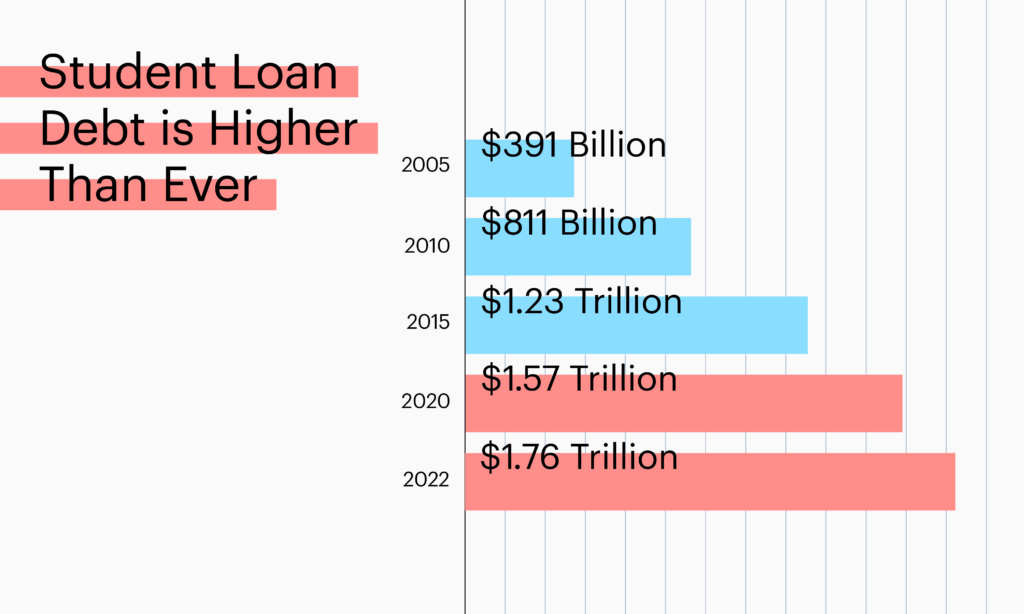
Federal v. Private: What’s the difference?
The federal government is the largest provider of student loans. In fact, the government holds about 93% of all student loan debt, meaning fewer than $1 in $10 of student loan debt is owed to private lenders. Private student loans, like those originated by Sallie Mae, are recommended as supplemental support for students and families who have financed the bulk of their education with income, savings, scholarships and grants, and aid from the federal government.
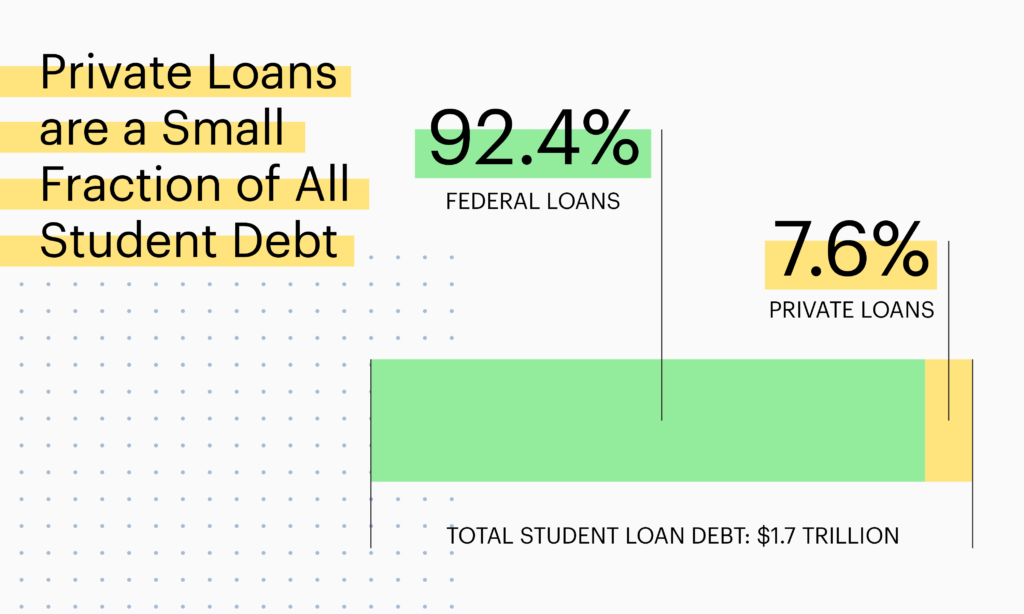
How does Sallie Mae Help?
With Financial Planning Calculators for Students & Families
Paying for higher education should be simpler and students and their families should be informed, understanding loan choices and how repayment works before committing to a loan. Sallie Mae’s easy-to-use online financial planning tools and resources make it clear how the choices students make today can affect their lives tomorrow. In 2020, Sallie Mae helped more than 420,000 students and families finance their education, and that lending philosophy is working: On average approximately 2% of our loans in repayment default annually.
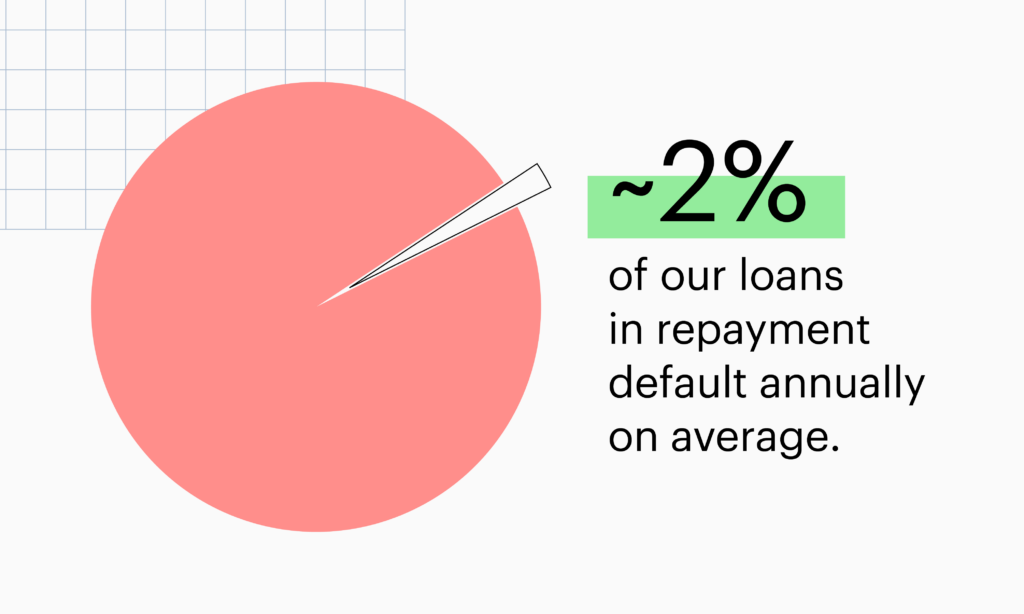
With Free Scholarship Search Tools
In the 2021-22 academic year, 60% of families used scholarships to pay for college, according to the 2022 How America Pays for College report. Sallie Mae provides a free scholarship search tool, helping students and families find more free money to pay for college. The tool opens doors to a variety of scholarships based on majors, locations, and even unique interests.
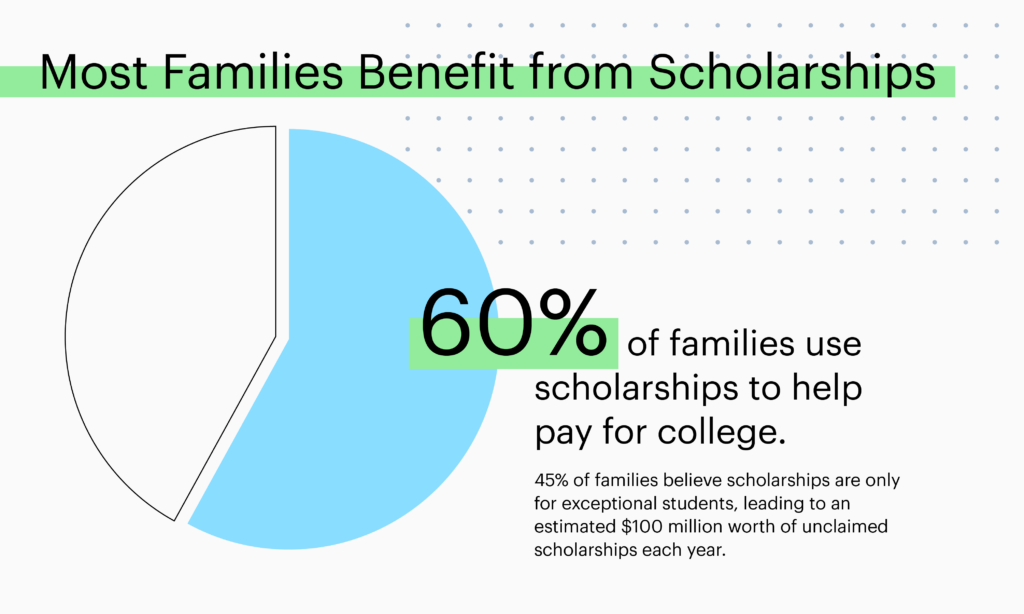
By Making Applying for the FAFSA Easier
In 2021, 62% of families said they would definitely or probably submit the FAFSA®, the Free Application for Federal Student Aid, but only 20% reported feeling prepared, according to the 2022 College Confidence: What America knows about paying for college report. Sallie Mae offers a comprehensive FAFSA application guide that simplifies the process to complete and submit the form, opening the door to $112 billion in federal funding, such as grants and scholarships.
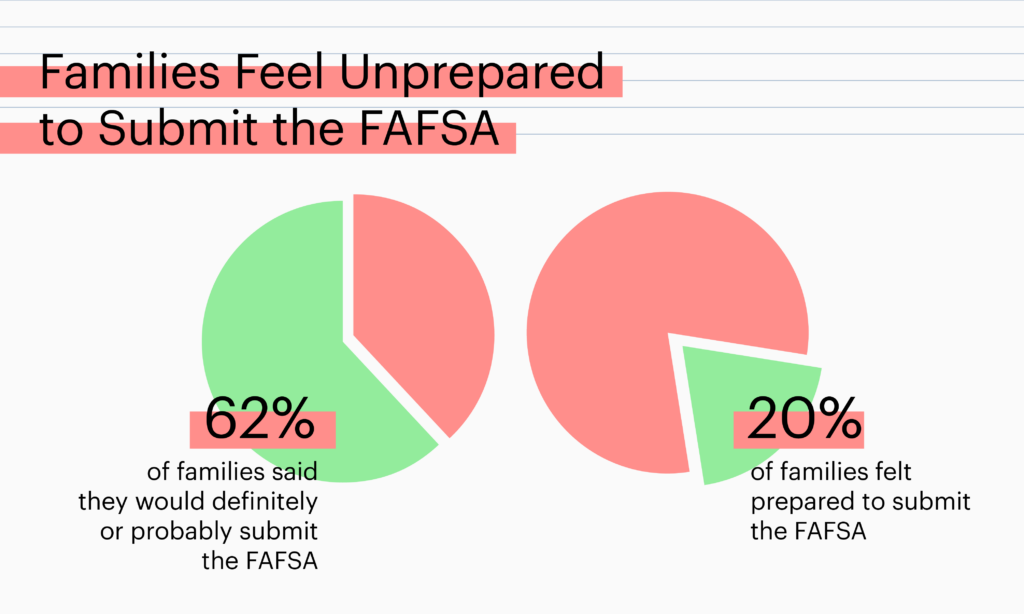
FAFSA is a registered service mark of U.S. Department of Education, Federal Student Aid

11.01.2022
The Sallie Mae Fund and Thurgood Marshall College Fund Award $250,000 in Scholarships to 25 High School Students
Twenty-five deserving students from across the country received $10,000 to help pay for their higher education through Sallie Mae’s Bridging the Dream Scholarship for High School Seniors. This year’s recipients excel inside and outside the classroom and are attending a diverse set of institutions – state colleges, Ivy League universities, and Historically Black Colleges and Universities. Many of the recipients are also from underserved communities who often need additional support to access higher education.
The Bridging the Dream Scholarship program is part of a $3 million commitment made by The Sallie Mae Fund – in partnership with Thurgood Marshall College Fund – to open doors of higher education for students from all backgrounds.
In addition to The Bridging the Dream Scholarship for High School Seniors, Sallie Mae also offers The Completing the Dream Scholarship, and The Bridging the Dream Scholarship For Graduate Students.
Meet the 25 outstanding students.
2022-2023 Bridging the Dream Scholarship Recipients
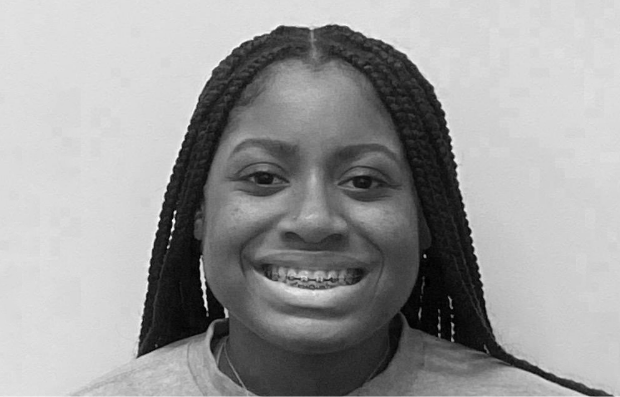
Alayah Osullivan
Hometown: Brooklyn, NY
College: North Carolina A&T State University
Major/Minor: Biology, Psychology
Fun Fact: First person in her family to graduate high school and attend college
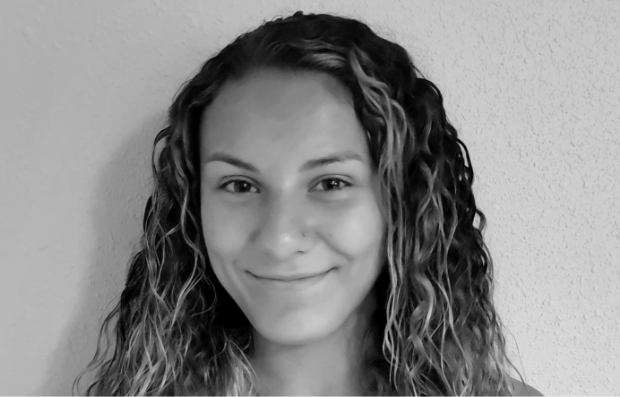
Bridgett Ellis
Hometown: Hamilton, MT
College: University of Montana Western
Major/Minor: Pre-Veterinary
Fun Fact: Won multiple rodeo titles and wants to specialize in equine dentistry

Chilynn Howard
Hometown: Avon, IN
College: Ball State University
Major/Minor: Fashion Merchandising and Business
Fun Fact: Wants to be an entrepreneur and create a platform for the Black community to discuss mental health
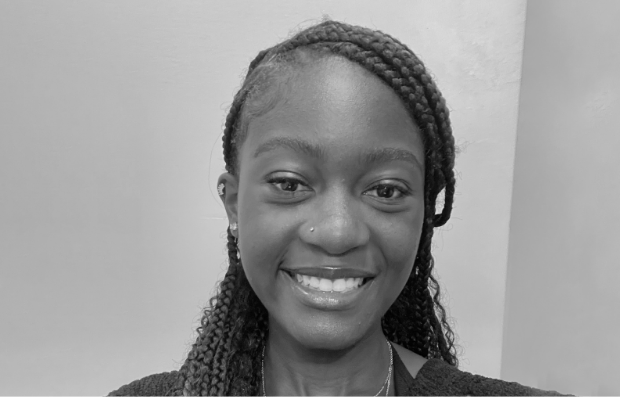
Courtney Exantus
Hometown: Clarksville, TN
College: Middle Tennessee State University
Major/Minor: Speech-Language Pathology
Fun Fact: Wants to make a difference in the speech-language pathology field, as only 3% of audiologists and speech-language pathologists are African American
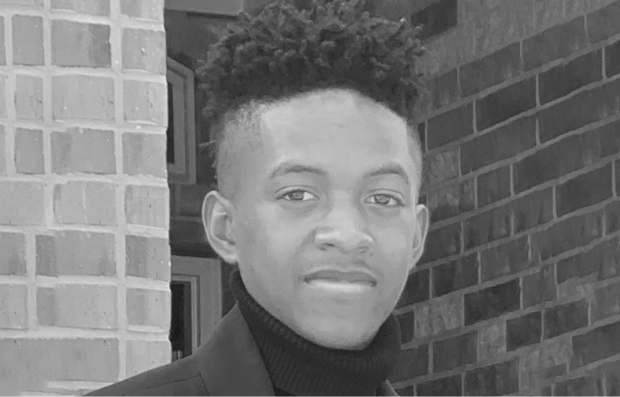
Donnell Milton
Hometown: Katy, TX
College: Prairie View A&M University
Major/Minor: Digital Media Arts
Fun Fact: Wants to pursue a career in design, either in animation or video game development
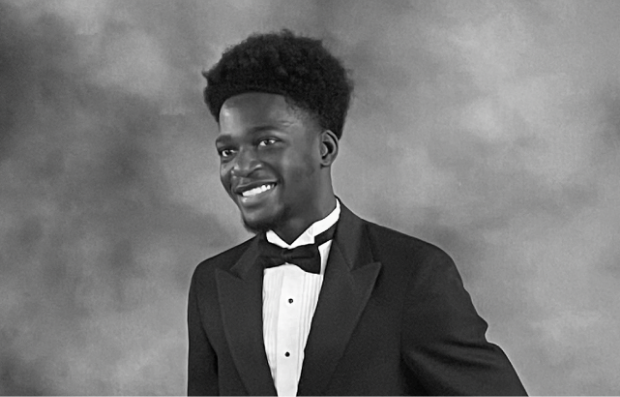
Ebenezer Antwi
Hometown: Smyrna, DE
College: University of Delaware
Major/Minor: Criminology
Fun Fact: Passionate about raising awareness about the school to prison pipeline, and wants to fight for justice in the courtroom one day

Gracie Harmann
Hometown: Racine, WI
College: University of Wisconsin—Whitewater
Major/Minor: Pre-Veterinary, Biology
Fun Fact: Has wanted to become a vet since she was three
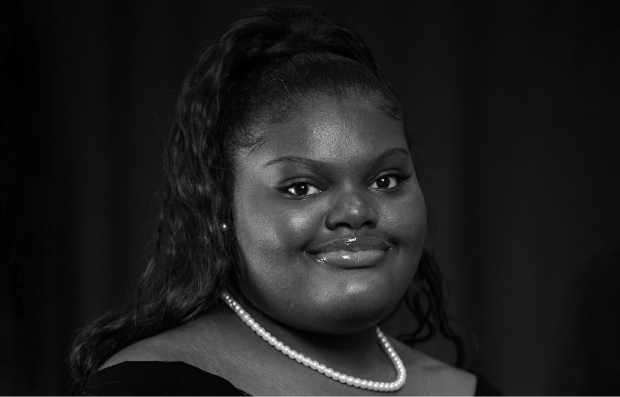
Jahni Glover
Hometown: Conyers, GA
College: North Carolina A&T State University
Major: Pre-Medicine, Biology
Fun Fact: Wants to become a pediatric doctor, and joined the Minority Association for Pre-Medical Students (MAPS)

Jiya Sharma
Hometown: Paramus, NJ
College: Seton Hall University
Major/Minor: Pre-medicine, Biology, Medical Humanities
Fun Fact: Wants to pursue a position in the medical field and help people in third-world countries
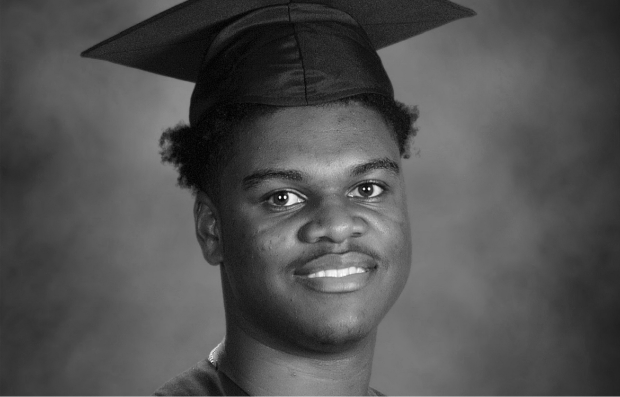
Joseph Thedford
Hometown: Florissant, MO
College: Jackson State University
Major/Minor: Civil Engineering
Fun Fact: In the marching band

KamDyn Hardin
Hometown: Citrus Heights, CA
College: Louisiana State University
Major/Minor: Business Management
Fun Fact: Wants to pursue a career in entrepreneurship and sports entertainment marketing

Madison Garrett
Hometown: Lindenhurst, NY
College: Columbia University
Major/Minor: Political Science
Fun Fact: Advocates for Black adolescent mental health and founded her own GenZ magazine
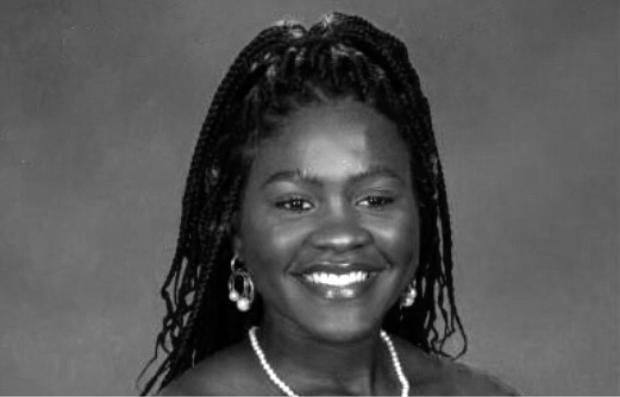
Manyi Ngu
Hometown: Jacksonville, FL
College: University of North Florida
Major/Minor: Graphic Design
Fun Fact: First-generation immigrant from Cameroon

Marisol Deanda
Hometown: Schuyler, NE
College: University of Nebraska—Lincoln
Major/Minor: Nutrition
Fun Fact: Becoming a certified personal trainer

Marisol Mora
Hometown: Burkburnett, TX
College: Midwestern State University
Major/Minor: Nursing
Fun Fact: Wants to become a pediatric nurse practitioner

Morghan Williams
Hometown: Richmond, VA
College: North Carolina A&T State University
Major/Minor: Kinesiology
Fun Fact: Wants to own her own physical therapy practice to help people like her brother, who is autistic.

Tariq Cunningham
Hometown: Fort Washington, MD
College: Bowie State University
Major/Minor: Finance, Accounting, Computer
Fun Fact: Wants to become a CEO of a technology company or bank, and help his community by creating a financial literacy tutoring program and opening a gaming and computer lab

Umulkheir Sharif Ali
Hometown: San Diego, CA
College: University of San Diego
Major/Minor: Psychology, Biomedical Ethics
Fun Fact: From Kenya, and wants to become a physician’s assistant to help underserved communities

Xavier Partee
Hometown: Whitsett, NC
College: North Carolina A&T State University
Major/Minor: Public Relations
Fun Fact: Wants to start a photography business on the side to support himself through college
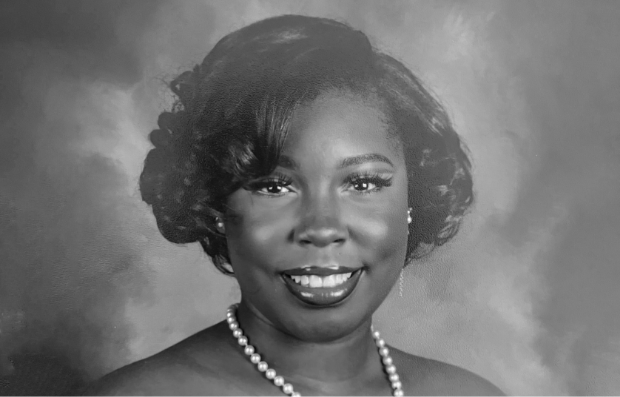
Zakaria Melton
Hometown: Charlotte, NC
College: North Carolina Central University
Major/Minor: Psychology, African American Studies
Fun Fact: Wants to become a well-renowned therapist with her own practice, focusing on supporting mental health in the African American community

Zion Jackson
Hometown: Verona, PA
College: University of Pittsburgh
Major/Minor: Pre-law, Law and Society, Spanish and Film and Media Studies
Fun Fact: Has several creative hobbies including writing, photography and film that she would like to combine with law to enrich the Black community and cultivate Black minds
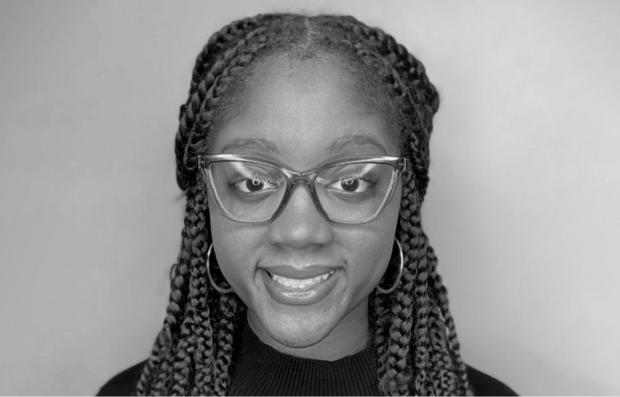
Londyn Jefferson
Hometown: Chicago, IL
College: University of Michigan—Ann Arbor
Major/Minor: Engineering, Computer Science
Fun Fact: Part of the Society of Women Engineers, the National Society of Black Engineers and the Black Students Union

Dora De La Cruz-Martinez
Hometown: West Liberty, IA
College: St. Ambrose University
Major/Minor: Pre-Law, Spanish

Khierston Nelson
Hometown: Burlington, NC
College: Savannah State University
Major/Minor: Forensic Biology, Criminology

Daaimah Husein
Hometown: Cincinnati, OH
College: Tennessee State University
Major/Minor: Computer Science

11.01.2022
Three Ways to Reduce Student Loan Debt
Each year, the amount of student loan debt held by Americans grows. It reached a record-breaking high in 2021 at $1.7 trillion, more than four times its 2005-level of $391 billion.
The vast majority — 93% — of this debt is from federal loans. Meaning, less than $1 out of every $10 of student loan debt is a private loan. Without significant changes to the federal student loan program, the debt cycle will continue for students and families.
Here are three policy changes the federal government could enact to reform the student loan system and support students and families who need financial assistance:
1. Meaningfully Increase Pell Grants
Pell Grants provide need-based financial assistance to low-income students to help pay tuition, fees, room and board and other expenses. Since grant funding doesn’t need to be repaid —it’s essentially free money — distributing more funds through the Pell Grant would likely mean these students would take on fewer loans.
Critically, Pell Grants also ensure that the aid goes to the students who need it most, helping to increase access and make the college funding system more equitable.
2. Simplify the FAFSA®
Seven in 10 (70%) families reported completing the Free Application for Federal Student Aid (FAFSA®) for academic year 2021-22, but three-quarters were unaware the FAFSA® is available starting in October, potentially leaving thousands in first-come, first-served free money on the table, according to “How America Pays for College 2022,” the annual study from Sallie Mae® and Ipsos.
The FAFSA® is the gateway to accessing more than $112 billion in grants, scholarships, and federal financial aid for higher education and states and colleges rely on information from the FAFSA® to determine need-based aid. Six years ago, the Department of Education moved the FAFSA® application start date from Jan. 1 to Oct. 1 to give families more time to complete it and better understand their financial aid eligibility earlier in the college application process. Despite those efforts, 75% of families are still unaware of the Oct. 1 open date, and only a little over half of families (54%) know all students are eligible to submit the FAFSA®. Many families also bypass the FAFSA because they don’t think they’d qualify for aid or find the application to complicated.
Lawmakers recently passed a bill that would simplify the form, but more is needed, including better informing students and families about deadlines to submit the form and debunking the perception that income is the only factor the government uses to decide if a student qualifies for federal financial aid.
3. Increase Loan Transparency
Federal student loans are subjected to less rigorous disclosure requirements than private student loans. The federal borrowing process could be improved to more clearly inform students and families about their specific borrowing plans.
Sallie Mae, a private lender, offers a variety of tools to ensure responsible lending – including Scholarship Search by Sallie, which helps connect students to scholarships.

08.23.2022
Three Ways Sallie Mae is Powering Confidence for All College Students
Sallie Mae’s® mission is to power confidence for students and families along their unique journey through higher education. As a private student loan lender, we continue to prioritize providing families with the tools, resources and – if needed – responsible financing as they navigate to, through, and immediately after college.
Here are three examples of how we’re doing that:
1. Simplifying College Planning
Earning a college degree sets students up for long-term success but applying to and paying for school can be complex. Sallie Mae provides students and families a variety of free tools aimed at simplifying that process including Scholarship Search by Sallie, which helps connect students to scholarships.
2. Awarding Scholarships
As part of an effort to support access and completion in higher education, Sallie Mae® has committed millions in scholarships to support students from underserved communities.
In partnership with the Thurgood Marshall College Fund, Sallie Mae has awarded scholarships to more than 1,100 students, collectively totaling $4 million since 2021.
“Higher education transforms lives, and we’re committed to removing the financial barriers that so often prevent students from persisting to degree completion,” said Dr. Harry Williams, President and CEO of Thurgood Marshall College Fund. “That’s why we are thrilled to partner with Sallie Mae® on this scholarship program.”
Scholarships from Sallie Mae® continue to open the door to higher education for students and families who otherwise may not have access to these opportunities.
“As a first-generation and low-income student, I would not be able to pursue a legal education without the generosity of others,” said Vanessa Agudelo, a J.D. candidate at Harvard Law School who received a Sallie Mae® Bridging the Dream scholarship last year. “For students like me, getting accepted into the law school of your dreams is not enough. This scholarship has provided me with the financial resources to allow me to pursue my dream of becoming an education lawyer and increasing educational opportunities for vulnerable communities.”
3. Advancing Financial Education
For many students and families, paying for college is one of their first major financial decisions and research continues to show those with a plan are better prepared and more confident in meeting those costs. Research also shows that families are hungry for more financial education in high school. Last year, Sallie Mae® offered free financial literacy curriculum to high school students and their families on topics about saving, budgeting, financial aid, student loans, and repaying loans responsibly.
Through our college savings program, SmartyPig, we partnered with various personal finance experts to teach money management and saving tips for students and families with a focus on those from traditionally underserved communities.
In addition, Sallie Mae® also offers financial education for students after graduation. The program provides lessons on how to budget, manage debt, and build and maintain good credit.
These are just some of the many ways we’re Powering Confidence – supporting students and families on their journeys to, through and immediately after college. Learn more by reading our Corporate Social Responsibility report.

07.29.2021
Report: Vast Majority of Students and Families Effectively Managing Private Student Loans
The latest Private Student Loan Report from MeasureOne provides a helpful glimpse into the private student loan industry — and some of the findings may surprise you.
Contrary to student debt-related headlines, students and families continue to effectively manage private student loan payments today. In fact, the overwhelming majority are back to making regular payments despite the pandemic, and fewer than 1% of loans are defaulting annually.
Private student lenders have an approach anchored on strong underwriting, assessing a borrowers’ ability to afford a loan. High rates of cosigner participation also help keep delinquency and default rates low. This year was no different, with these rates at their lowest since 2015 — accounting for less than 1% of all private student loans across the industry.
Private student loans make up approximately 8% of outstanding student loans. The remaining 92% — roughly $1.59 trillion — are federal loans that are owned or guaranteed by the Department of Education. Recent stories have shed more light on some of the issues around federal student loan repayment.
Sallie Mae is committed to helping students achieve their higher education goals — and the last year-and-a-half was no exception. By empowering students with the knowledge, tools, and resources to make smart financial decisions, Sallie Mae can set them up for a lifetime of success and confidence.
Click here to view the full MeasureOne Private Student Loan Report.


